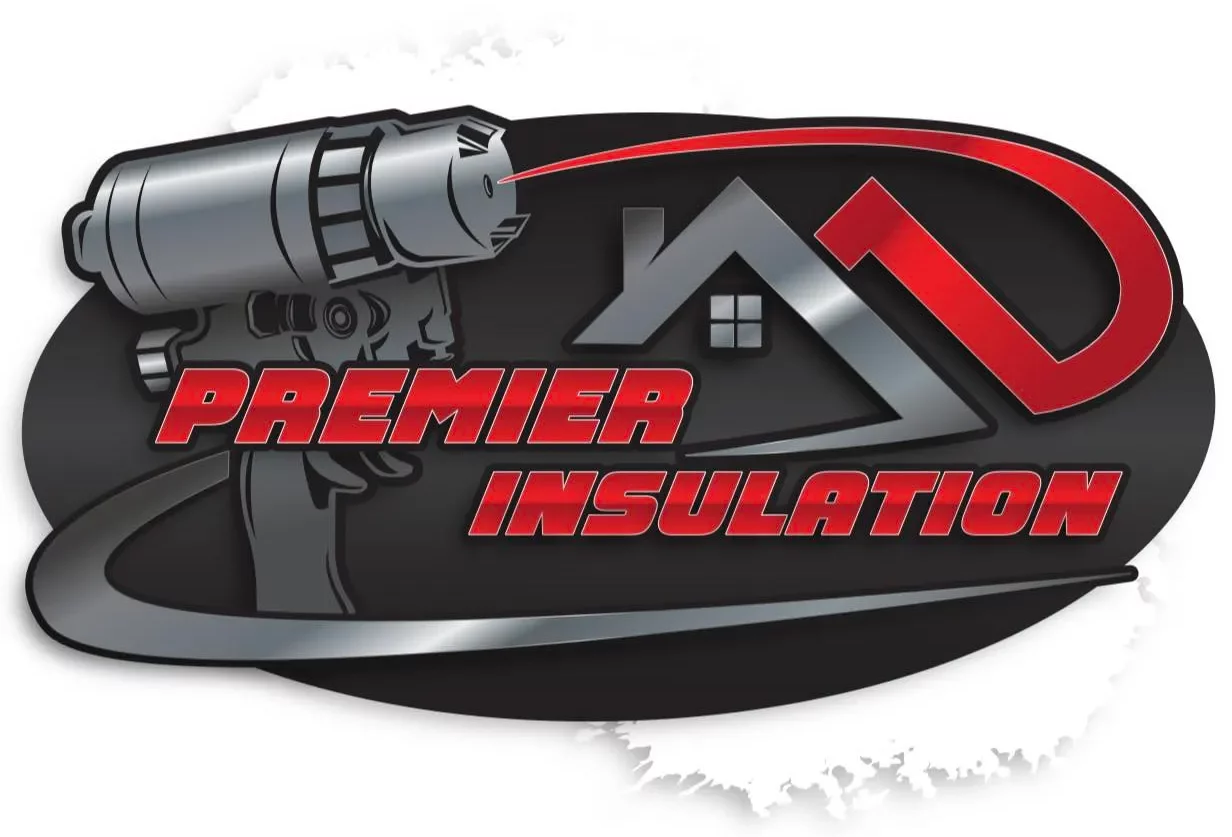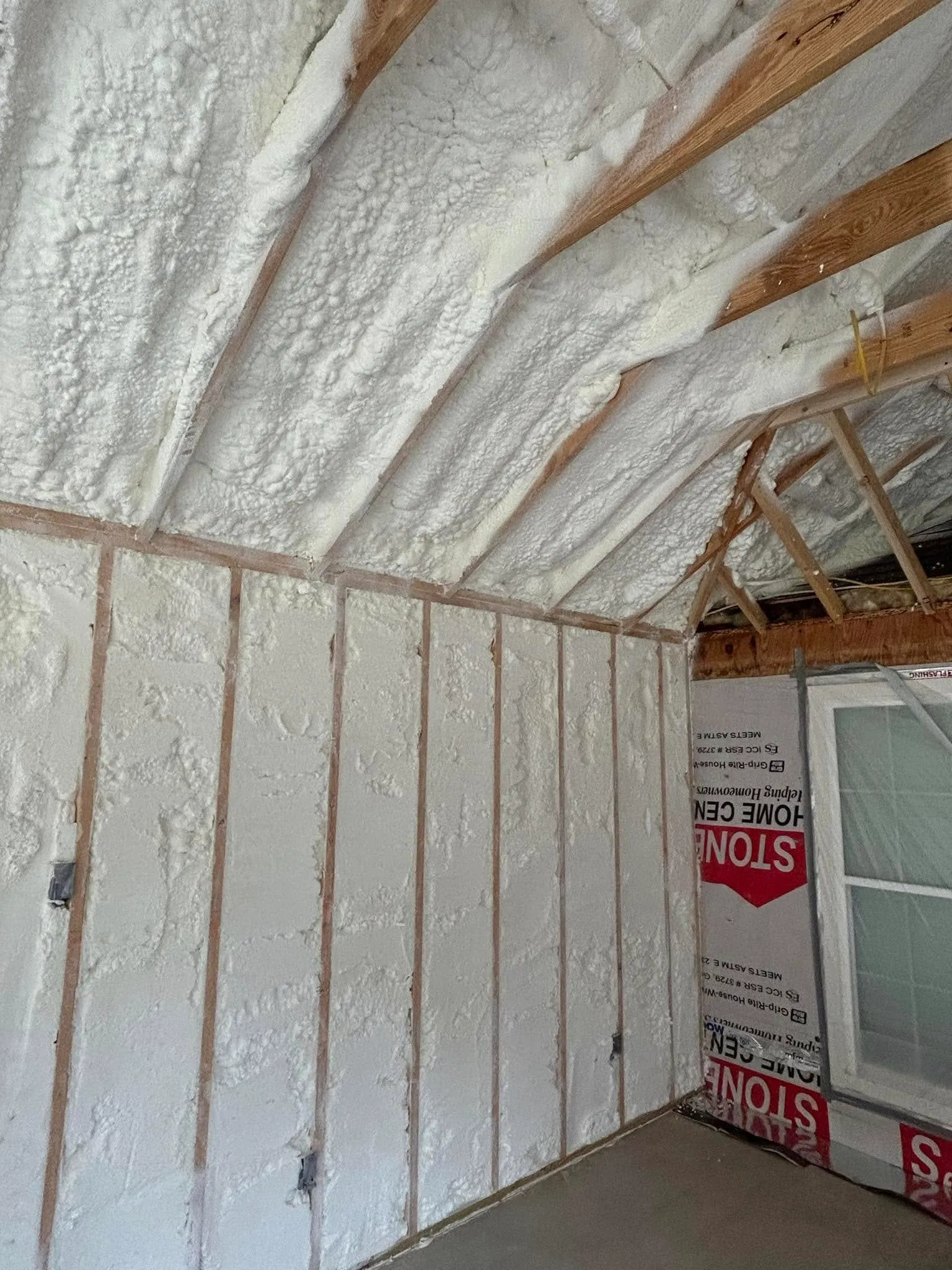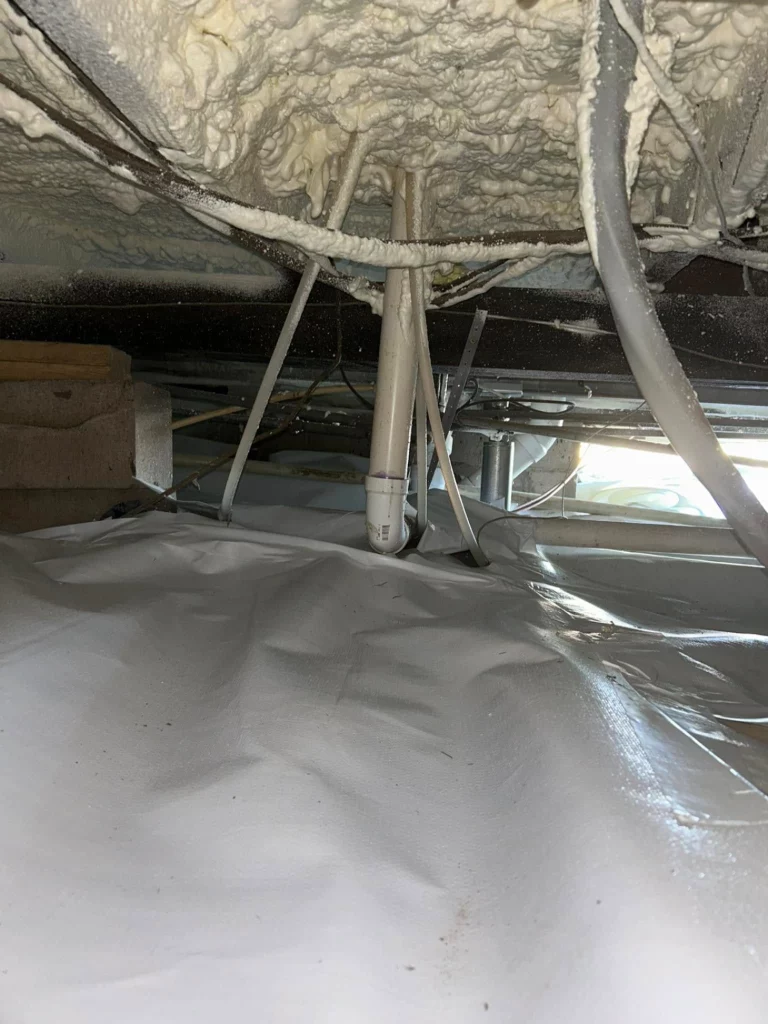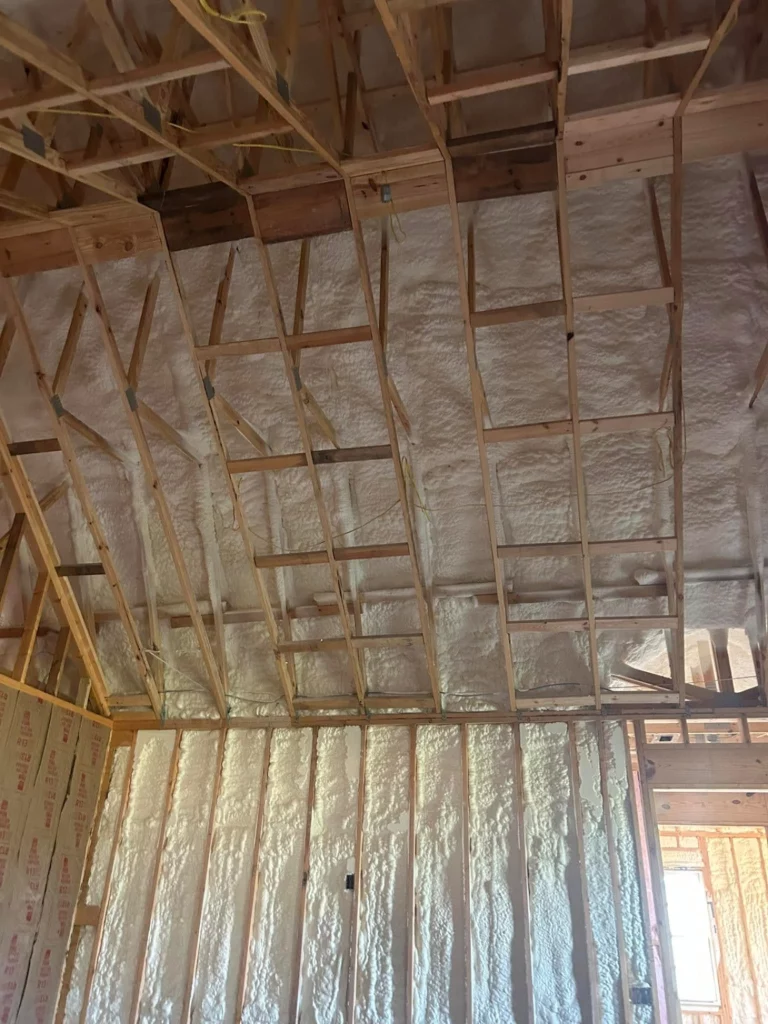Imagine coming home on a freezing winter day to a house that feels cozy and warm right away, without cranking up the thermostat and watching your energy bill skyrocket. Or beating the summer heat without constant air conditioning runs. That’s the power of good insulation. It keeps your home comfortable year-round, cuts down on energy costs, and even helps the environment by reducing energy waste.
Insulation refers to materials installed in your home’s walls, attic, floors, and other spaces to slow the flow of heat. Think of it as a barrier that prevents your heated or cooled air from escaping and outside temperatures from sneaking in. Without proper insulation, homes lose up to 25% of their conditioned air through leaks and thin barriers, according to the U.S. Department of Energy. This guide draws from decades of hands-on work installing and advising on insulation systems to give you a full picture of how it all works.
You’ll start with the basics: what insulation is, why it matters for your wallet and well-being. From there, explore the main types of insulation materials, each with their strengths and best uses. Learn about the real benefits, from lower bills to improved air quality. Get practical advice on picking the right option for your home, including R-values and climate considerations. The guide covers installation steps, whether you tackle it yourself or hire help, and pitfalls to dodge. Wrap up with ways to measure results and what’s coming next in insulation tech.
By the end, you’ll have the knowledge to make smart choices that make your home more efficient and comfortable. Let’s begin by exploring what insulation is and why it matters. Whether you’re building new, renovating, or just curious, this resource covers everything you need to know.
What Is Insulation and Why Does It Matter?
At its heart, insulation traps air pockets to resist heat transfer. Heat moves in three ways: conduction (direct contact), convection (air movement), and radiation (waves like sunlight). Insulation materials block these paths, keeping indoor temperatures stable.
Homes built before the 1980s often have little to no insulation, leading to drafts, uneven heating, and high utility bills. Today, building codes require minimum levels, but many older homes still fall short. Proper insulation addresses this by creating a thermal envelope around your living space.
Why bother? Energy efficiency tops the list. The U.S. Energy Information Administration reports that residential energy use for heating and cooling accounts for about 50% of a typical home’s total. Insulation reduces that demand significantly. Beyond savings, it boosts comfort—no more chilly floors or hot spots. It also quiets outside noise and can prevent moisture issues that lead to mold.
In colder climates, insulation keeps heat in during winter; in hot areas, it blocks summer sun. Even in mild zones, it steadies temperatures for better sleep and daily life. Market data shows U.S. homeowners spend an average of $1,500 annually on heating and cooling—insulation can slash that by 10-20%.
Types of Insulation Materials
Choosing insulation starts with understanding options. Each type suits different spaces and budgets, with varying ease of installation and performance.
Batt and Blanket Insulation
These come in rolls or precut panels, often made from fiberglass or mineral wool. Fiberglass insulation is affordable and widely available, with R-values around 3.1 to 4.3 per inch. Mineral wool resists fire better and absorbs sound.
Pros: Simple to install in attics or between studs. Cons: Can irritate skin during handling; doesn’t fill odd shapes well.
Blown-In Insulation
Loose-fill materials like cellulose (recycled paper) or fiberglass are blown into attics or walls using a machine. Cellulose offers R-values up to 3.7 per inch and resists settling.
It’s great for retrofitting existing homes. Data from the Oak Ridge National Laboratory indicates blown-in options cover irregular areas more evenly than batts.
Spray Foam Insulation
This expands on contact, creating an airtight seal. Closed-cell spray foam has high R-value (6-7 per inch) and adds structural strength. Open-cell is lighter and better for soundproofing.
Ideal for hard-to-reach spots, but it’s pricier. The Insulation Institute notes it can reduce air leakage by up to 24%.
Rigid Foam Boards
Polystyrene or polyisocyanurate sheets provide R-5 per inch. Use them in basements or under slabs. They’re moisture-resistant but need a thermal barrier to avoid fire risks.
Reflective Insulation
Foil-faced materials reflect radiant heat. Best in hot climates or attics, with R-values from air spaces they create.
To help compare these options, here’s a summary table:
| Type | R-Value per Inch | Best For | Cost (per sq ft) | Installation Ease |
|---|---|---|---|---|
| Fiberglass Batt | 3.1-4.3 | Attics, Walls | $0.30-$0.50 | Easy |
| Blown-In Cellulose | 3.2-3.8 | Attics, Walls | $0.60-$1.20 | Moderate |
| Closed-Cell Foam | 6.0-7.0 | Rim Joists, Walls | $1.00-$2.50 | Professional |
| Rigid Foam Board | 3.8-5.0 | Basements | $0.25-$1.00 | Moderate |
| Reflective | 3-6 (with air) | Attics | $0.20-$0.50 | Easy |
Expert Tip: For attics, pair blown-in with baffles to maintain ventilation and prevent moisture buildup.
Key Takeaways:
- Select based on space: batts for open areas, spray foam for seals.
- Higher R-value means better performance, but consider moisture and fire ratings too.
- Blown-in excels in retrofits; foams in new builds for airtightness.
Benefits of Proper Insulation
Insulation does more than save money—it transforms how you live in your home, thanks to the science of how it resists heat transfer that we’ll explore next.
Energy Savings and Cost Reduction
By minimizing heat loss, insulation lowers your heating and cooling needs. The ENERGY STAR program estimates adding R-30 to an attic can save 10% on bills. Nationally, poor insulation contributes to $40 billion in wasted energy yearly.
Improved Comfort and Health
Stable temperatures mean no drafts or stuffy rooms. It also controls humidity, reducing allergens and mold. Studies show well-insulated homes have 20% fewer respiratory issues.
Environmental Impact
Less energy use cuts greenhouse gases. If every U.S. home upgraded insulation, it could save 100 million tons of CO2 annually, per Lawrence Berkeley National Laboratory.
Noise Reduction and Durability
Materials like mineral wool dampen sounds from traffic or neighbors. Insulated homes last longer by protecting against temperature swings that crack foundations.
Expert Tip: Insulate around windows and doors too—weatherstripping adds quick wins for comfort.
Key Takeaways:
- Expect 10-20% bill savings; more in extreme climates.
- Comfort gains include even temps and quieter spaces.
- Go green: reduce your carbon footprint with minimal effort.
How Insulation Works: The Science Behind It
Insulation’s effectiveness hinges on R-value, which measures resistance to heat flow. Higher numbers mean better insulating power. But it’s not just thickness—material density and installation quality matter.
Heat conduction slows through trapped still air; fibers or foams create those pockets. Convection stops with barriers, and radiation reflects off foil surfaces.
Moisture complicates things: wet insulation loses R-value quickly. Vapor barriers help in humid areas.
In practice, whole-house systems matter. An audit reveals weak spots like uninsulated ducts.
Choosing the Right Insulation for Your Home
Your home’s size, age, climate, and layout guide choices. Start with R-value recommendations: DOE suggests R-49 for attics in northern states, R-30 in south.
By Location: Attics, Walls, Floors
Attics need loose-fill or batts for easy access. Walls suit batts in new construction or blown-in for retrofits. Floors over crawlspaces use rigid foam.
Climate plays in: dense-pack for windy areas, foam for humid ones.
Calculating Your Needs
Use online calculators or pros to estimate. Factor in existing insulation—don’t double up without checking compatibility.
Expert Tip: Get a home energy audit first; infrared cameras spot leaks you miss visually.
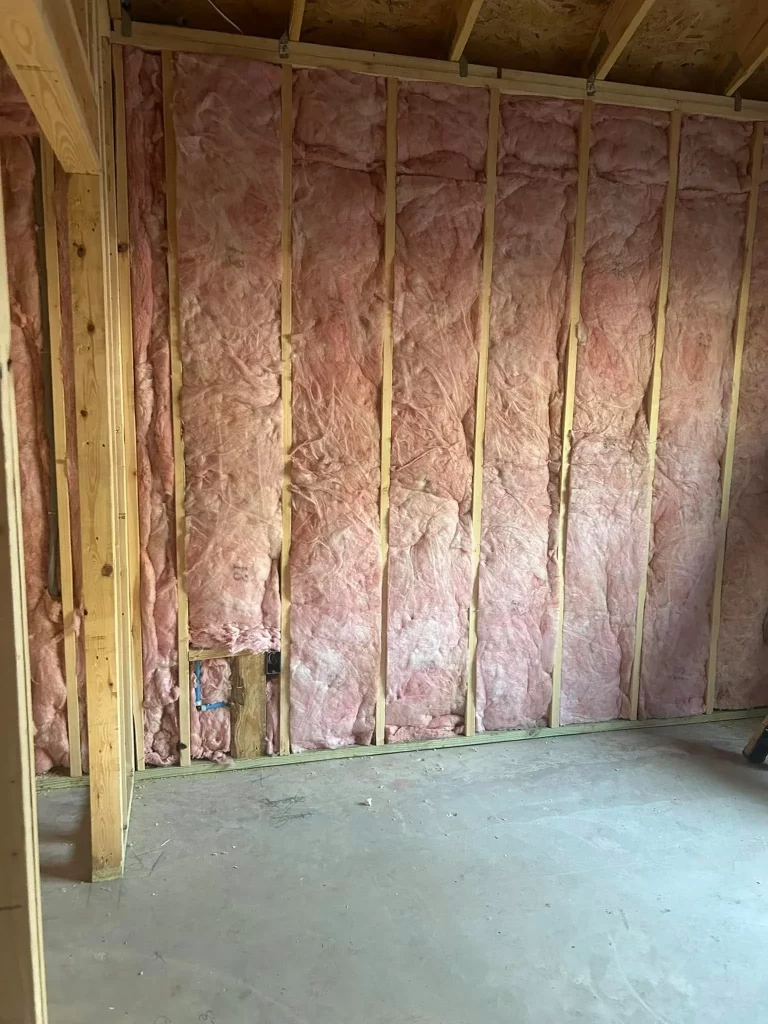
Installation Guide: DIY vs. Professional
Proper setup maximizes benefits. Measure spaces accurately and wear protective gear—masks, gloves, suits for fibers.
Step-by-Step for Attic Batts
- Clear space and check for pests.
- Install baffles for soffit vents.
- Lay batts between joists, no compression.
- Seal gaps with foam.
For walls, rent a blower for blown-in.
DIY saves money on simple jobs, but pros handle spray foam safely. Costs: $1-4 per sq ft installed.
When to hire: complex homes or seals. While DIY is feasible, be aware of common challenges ahead.
Common Challenges and How to Avoid Them
Settling happens with loose-fill; choose quality brands. Compression kills R-value—fit loosely.
Moisture risks condensation; add vapor retarders. Poor ventilation breeds mold—balance intake and exhaust.
Market stat: 40% of homes have insulation issues leading to 15% higher bills, per Home Performance Alliance.
Expert Tip: Inspect annually for shifts or damage, especially after storms.
Measuring Success and ROI
Track bills pre- and post-install: expect payback in 2-5 years. Use blower door tests for air tightness.
Tools like smart thermostats monitor efficiency. Long-term, it raises home value by 5-7%.
Future Trends in Insulation
Smart materials like aerogels promise higher R-values in thin layers. Recycled options grow, with bio-based foams emerging.
Phase-change materials store heat, adapting to swings. Integration with solar and IoT for optimized homes.
Putting Your Insulation Strategy into Action
This guide equips you with the essentials to tackle insulation confidently. Remember, the right type and proper install deliver big wins in comfort, savings, and sustainability. Start small—assess your home, pick priorities like the attic, and build from there. Refer back as needed, and track your progress to see real changes. You’re now set to create a more efficient, welcoming space.
Need Expert Guidance?
If you’re ready to implement these ideas but want personalized advice on selecting and installing insulation tailored to your home, contact Premier Insulation at (229) 554-3939 or email premiereinsulationga@gmail.com. Their team offers consultations to ensure you get the best results without guesswork. (72 words)
Sources
- U.S. Department of Energy – Guide on insulation basics and heat loss prevention.
- U.S. Energy Information Administration – Data on residential energy consumption for heating and cooling.
- Oak Ridge National Laboratory – Research on blown-in insulation performance and coverage.
Frequently Asked Questions About Insulation
What R-value do I need for my attic?
It depends on your zone: R-38 to R-60 in cold areas, R-30 minimum elsewhere. Check local codes for exacts.
Can I install insulation myself?
Yes, for batts or rolls if you’re handy. Blown-in needs equipment; spray foam requires training to avoid hazards.
How long does insulation last?
Most types endure 20-50 years with care. Fiberglass can sag over time; foams hold shape better.
Does insulation help with soundproofing?
Absolutely—dense materials like rock wool cut noise by 50% in walls. Combine with sealing for best results.
Is spray foam worth the extra cost?
Often yes, for its seal and efficiency. In leaky homes, it pays off faster than cheaper options.
How does insulation affect home resale value?
Buyers love efficiency; updated insulation can boost value by $5,000-$15,000, depending on scope and location.

